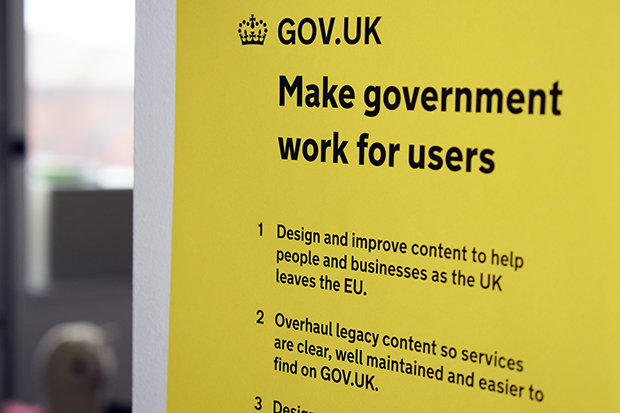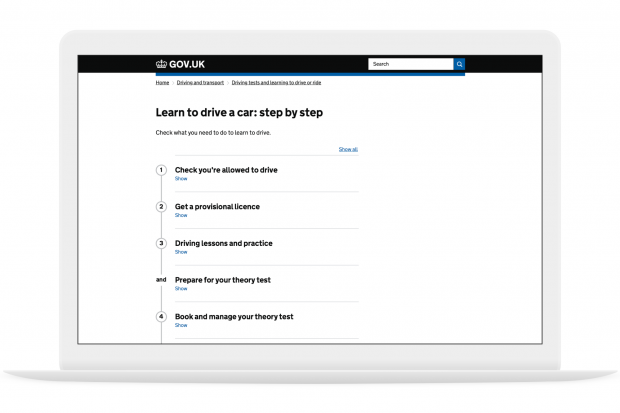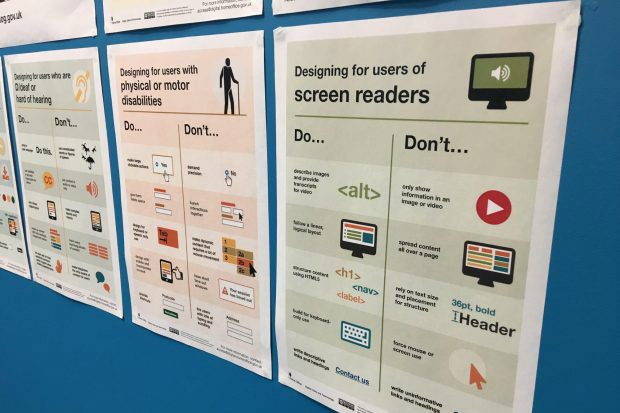
The Driver and Vehicle Standards Agency (DVSA) turned 5 years old on 1 April 2019. And later this year, GOV.UK will be 7 years old.
As both our agency and GOV.UK continue to evolve, it’s important that we have a clear set of priorities for the year ahead to support that evolution. Our work on GOV.UK needs to help users and support DVSA's vision of safer drivers, safer vehicles and safer journeys for all.
For April 2019 to March 2020, we have 6 priority areas we’ll be working on:
- design and improve content to help people and businesses as the UK leaves the EU
- overhaul legacy content so services are clear, well maintained and easier to find on GOV.UK
- design and deliver joined-up, end-to-end services on GOV.UK
- support our priority campaigns with content designed to meet user needs
- help to develop a user-centred design community in the agency
- make our content more inclusive and meet accessibility standards
1. Design and improve content to help people and businesses as the UK leaves the EU
We will continue intensive work to make sure our content helps citizens and businesses as the UK leaves the EU.
We're focusing on:
- creating and maintaining simple and clear user journeys
- making content easy to find through navigation or search
- making guidance easy to understand and act on
We'll improve content based on user feedback and what the analytics data tells us.
2. Overhaul legacy content so services are clear, well maintained and easier to find on GOV.UK
We still have some content on GOV.UK that existed before DVSA was created.
We've audited all of it to find out what we still need, what needs to be redesigned, and how it might cross into some of our other priorities for the year (for example, is it going to be affected by EU Exit).
So this year we will focus on:
- continuing to improve page titles and summaries
- redesigning content to meet verified user needs
- reducing duplication across GOV.UK
- moving content from PDFs to webpage format wherever possible
3. Design and deliver joined-up, end-to-end services on GOV.UK

Doing complex tasks like becoming a driving instructor means users have to use lots of different transactions and guidance. They have to work out what order to use them in and at what point to use them.
GOV.UK’s step by step navigation is a feature designed to help guide users through complex tasks. We've already worked on a few of these, including learn to drive a car and become a car driving instructor.
We'll continue this work, helping make some of our most complex tasks simpler. Expect to see pages to help you:
- set up an MOT centre
- become a goods vehicle operator
- become a bus or coach operator
4. Support our priority campaigns with content designed to meet user needs
In DVSA, we’re starting work on 3 large communication campaigns. They are to:
- make sure learner drivers are better prepared for their driving test
- reduce the number of MOT tests that are done late by getting more people signed up to our MOT reminders service
- reduce the number of lorry drivers who break drivers’ hours rules
We'll support these campaigns by:
- carrying out user research to fully understand the needs and expectations of our users
- reviewing and improving user journeys
- making content easy to find through navigation or search
- reducing duplication in content
- making guidance easy to understand and act on
- testing what works best to get the behavioural changes we need to make drivers and vehicles safer
5. Help to develop a user-centred design community in the agency
Within DVSA, we do not yet have a clear structure for content designers, graphic designers, technical writers, service designers and user researchers to learn from each other and share best practice.
Fixing this is a top priority for us this year.
We're going to help to build a user-centred design community. We want everyone in DVSA in the Digital, Data and Technology profession working on user-centred design to have better support. It will also let us share what we're doing in a more joined up way - both within DVSA, and across government.
We'll start by identifying the needs of people in the community and building something that works for them. We'll blog about our journey during the year.
6. Make our content more inclusive and meet accessibility standards

We need to make sure our content can be used by as many people as possible. This includes those with impaired vision, motor difficulties, cognitive impairments or learning disabilities, and deafness or impaired hearing.
We need to make sure that:
- all new content meets accessibility standards from 23 September 2019
- existing content is fixed to meet accessibility standards by 23 September 2020
So we will:
- develop a plan to work out what content is and is not accessible and how we'll prioritise fixing it
- explain the work that's needed to our colleagues and why it's important to do it
- make a roadmap to set out how we’ll meet accessibility standards - aiming to fix the highest priority things first
- put plans in place so all new content meets the accessibility standards
Find out more about making public sector websites and apps accessible.
Keep up to date with our work by signing up for email alerts or following DVSA digital on Twitter.